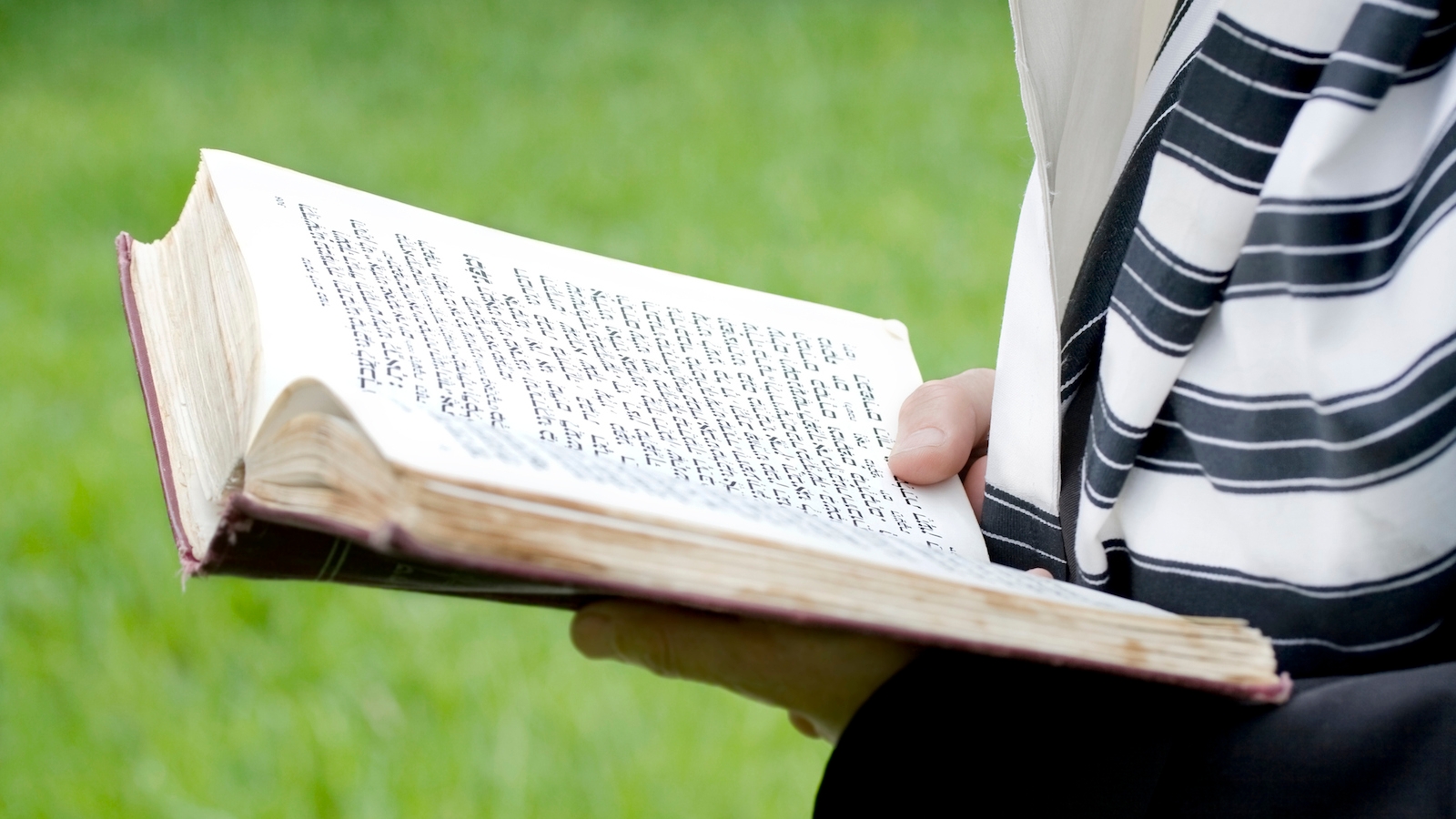Jewish prayer is as ancient as the Hebrew Bible, for the Torah records that even the patriarchs prayed to God in times of distress or to give thanks. In late antiquity, the Rabbis of the Talmud established formal structures and blessings to be recited for the various worship services.
History of the Prayerbook
Two of the earliest written versions of the prayerbook, called a siddur (meaning “order”) in Hebrew, were compiled in Babylonia by the sages Amram Gaon and Saadia Gaon in the ninth century CE. Over the centuries, scores of rabbis produced their own versions of the siddur, providing commentaries and additional religious poems as they were written and incorporated into a local community’s liturgy. Even to this day, while the talmudic structure of prayers remains the standard format, contemporary rabbis, denominational movements, and different ethnic communities within the Jewish people continue to update and publish new siddurim. Although separate prayerbooks (called machzors) exist for High Holy Day services and daily prayers, siddurim for Shabbat and holidays are more prevalent within any given synagogue and serve as the primer of spirituality for Jewish life.
Morning Blessings and Psalms: Pesukei D’Zimra, Shema and Barkhu
Nearly all Shabbat and holiday siddurim (plural of siddur) are structured around significant liturgical units. The first of these, and often the first section one finds in a siddur, is morning blessings and psalms. Called Birchot HaShahar, or blessings of the morning, these were originally recited by individuals in their home as they awoke, washed, and dressed for the day. Later on, these blessings—such as thanking God for giving sight to the blind (once recited before one opened their eyes in the morning), raising the downtrodden (recited before standing up from bed), and clothing the naked (recited before getting dressed)—were transferred to the synagogue and included in the siddur.
To spiritually prepare the worshipper for reciting the obligatory major prayers of the morning, the Rabbis established that a series of psalms and selected passages from the Hebrew Bible should be recited each morning. Called Pesukei D’Zimra (verses of song), these readings were chanted, mumbled, or read silently by the individual worshippers in order to build up to the proper mood and reverential attitude for reciting the later prayers of the service.
One of the most ancient prayers recited by Jews is called the K’riyat Shema, or the recitation of the Shema, meaning “Hear!” In the Torah, Moses declares, “Hear, O Israel, the Lord is our God, the Lord alone” (Deuteronomy 6:4), which has become the quintessential statement of Jewish monotheistic belief. The Rabbis ordained the recitation of the Shema and a series of additional selections from the Torah each morning and evening. A series of berakhot, or blessings, was established to be recited before and after the passages of the Shema. Forming its own mini liturgical unit, the recitation of the Shema and its attendant blessings begins with the Barkhu, the formal call to prayer (“Praise the Lord who is blessed!”), and its antiphonal response by the congregation (“Praised be the Lord, who is blessed, forever and ever.”). The two blessings preceding the Shema are extended paeans to God on the twin themes of creation of the world and revelation of the Torah. Following the Shema is a concluding blessing thanking God for redemption of the Jewish people from slavery in Egypt and obliquely referring to a future, messianic redemption.
The Amidah (Standing)
The Amidah (literally, “standing”) is the second major liturgical unit of the Shabbat and holiday service. Taking its name, obviously, from the posture in which it is said, the Rabbis also referred to it as HaTefillah, or simply, “The prayer” par excellence. Using the image of master and servant, the Rabbis declared that a worshipper should come before their master first with words of praise, then ask one’s petitions, and finally withdraw with words of thanks. Using this tripartite division, every Amidah begins with three blessings, praising God’s relationship with the biblical patriarchs, God’s divine power to give and restore life, and God’s holiness. On Shabbat and holidays, instead of petitions that might distract us by reminding us of our physical wants and needs, the Rabbis established the middle section as an opportunity to celebrate the holiness of the Sabbath day and/or the festival. The final section of every Amidah concludes with blessings of thanksgiving to God for accepting our prayers, for the daily miracles of creation, and a final prayer for God to bestow justice, mercy, and peace on the world.
The Torah Service
Every Shabbat and holiday includes a service in which Torah scrolls are removed from the holy ark and read. Each Shabbat, a portion of the Torah is read, advancing each week until the entire five books of Moses are completed in a single year, although some liberal communities read the Torah in a three-year cycle, chanting one-third of each portion each week. On festivals, special selections are read outside of this order that either mention the particular holiday or highlight a theme of the festival.
As the Torah scroll is removed from the ark, the congregation chants, “From Zion shall come forth the Torah, the word of the Lord from Jerusalem” (Isaiah 2:3). Most siddurim also include the special blessings chanted before and after the reading of the Torah as well as the blessings before and after the Haftarah. Concluding with prayers for the host country, the State of Israel, and (in some siddurim) world peace, as well as additional psalms, the Torah is wrapped up in its mantle, marched around the sanctuary once again and returned to the ark as the congregation sings, “It is a tree of life to those who hold fast to it, and all of its supporters are happy” (Proverbs 3:18).
Ein K’eloheinu, Aleinu, Mourner’s Kaddish and Adon Olam
At the conclusion of every Shabbat and festival service, the medieval hymn Ein K’eloheynu (“There is none like our Lord”) is chanted, followed by a prayer called Aleinu, which means, “It is incumbent upon us.” Referring to the obligation to acknowledge the sovereignty of God, its highpoint is the line, “We bend the knee and bow, acknowledging the King of Kings, the Holy One, praised be God,” at which the congregation as a whole bows in the direction of the ark, toward the east—Israel and Jerusalem. Concluding with a messianic commitment to improving this world, the Aleinu prayer ends with a hope that on “that day, the Lord shall be one and God’s name will be one” (Zechariah 14:9). This is followed by the Mourner’s Kaddish, at which anyone in the community who is mourning the recent loss of a family member, or anyone observing the yearly anniversary of the death of a loved one, recites a prayer of praise to God. The service ends with the singing of the medieval hymn, Adon Olam, (“Lord of the World”), which contrasts Gods eternity and infinity with human mortality and finitude.
Hallels for Holidays
What has just been described is the general flow of a regular Shabbat service. On festivals there are additional sections of prayers included as way to celebrate the unique character of the day. One such addition is called Hallel, which means “praise.” This name is derived from the fact that of the six psalms of celebration chanted that make up Hallel, nearly all of them begin with the Hebrew word halleluyah, or “praise God!” Scholars surmise that the joyous chanting of Psalms 113 through to 118 were sung by the Levitical Temple workers even in ancient biblical times. Extolling God for the exodus from Egypt, for God’s power to effect salvation and save from enemies, the psalms of Hallel represent a brief spectrum of religious reasons for praising and rejoicing in God’s omnipotence. Beginning and ending with a blessing, Hallel is chanted immediately following the Amidah, preceeding the Torah service on the pilgrimage festivals of Passover, Shavuot, and Sukkot.
Liturgy as Replacement for Temple Sacrifices
Upon the destruction of the Second Temple in 70 CE by the Romans, the Rabbis of antiquity moved quickly to transform the rites and rituals of the now-defunct sacrificial cult into a spiritually based religion predicated on prayer and observance of the Torah’s commandments. In place of the daily and festival animal sacrifices, the Rabbis established the recitation of the Amidah, the central prayer of Jewish worship, as a substitute based on a creative interpretation of the prophetic utterance, “Let the [utterings of our] lips compensate for the bulls [which used to be sacrificed]” (Hosea 14:3).
Based on a one-to-one correspondence of Amidahs in place of animal sacrifices (except for the evening or ma’ariv service, which has no ancient sacrificial parallel), the Rabbis established an additional Amidah for Shabbat and holidays to be recited after the Torah reading. This is called the Musaf, or additional service, and corresponds to the additional animal sacrifice offered on these days. Consisting of the same opening and closing set of blessings, the central portion of the Musaf Amidah for Shabbat or holiday deals once again with the themes of the day, making specific mention of the animal sacrifices that were offered as the additional offering of that day. (Today, many liberal communities have eliminated the Musaf service.)
Aleinu
Pronounced: ah-LAY-new, Origin: Hebrew, it is the name of a prayer that marks the end of all three daily prayer services.
ark
Pronounced: ark, Origin: English, the place in the synagogue where the Torah scrolls are stored, also known as the aron kodesh, or holy cabinet.
Kaddish
Pronounced: KAH-dish, Origin: Hebrew, usually referring to the Mourner’s Kaddish, the Jewish prayer recited in memory of the dead.
Shabbat
Pronounced: shuh-BAHT or shah-BAHT, Origin: Hebrew, the Sabbath, from sundown Friday to sundown Saturday.
Shema
Pronounced: shuh-MAH or SHMAH, Alternate Spellings: Sh’ma, Shma, Origin: Hebrew, the central prayer of Judaism, proclaiming God is one.
Torah
Pronunced: TORE-uh, Origin: Hebrew, the Five Books of Moses.



